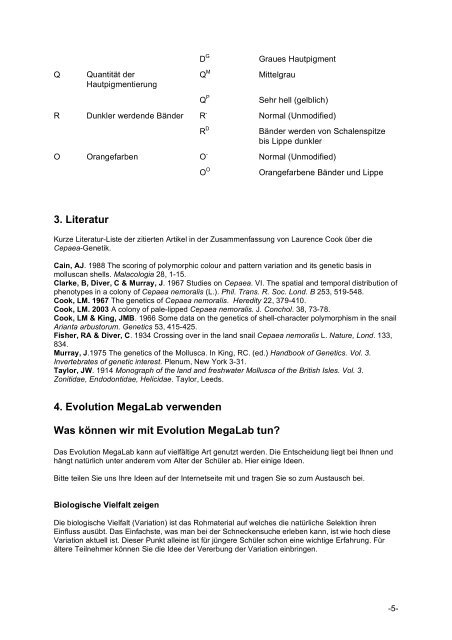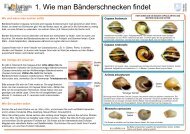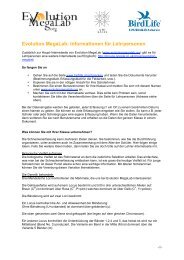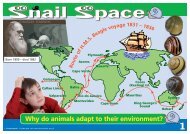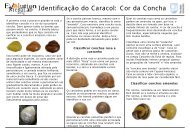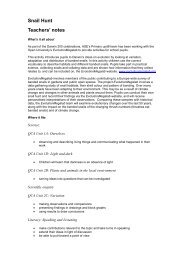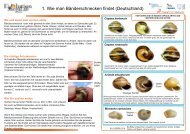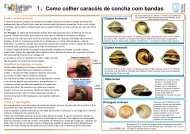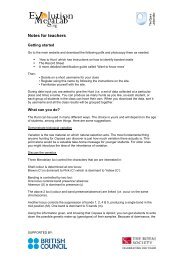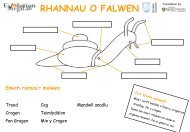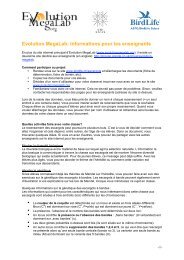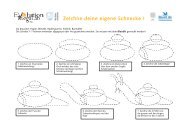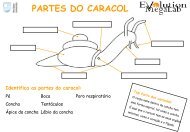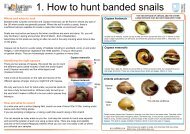Genetik von Cepaea - Evolution MegaLab
Genetik von Cepaea - Evolution MegaLab
Genetik von Cepaea - Evolution MegaLab
Sie wollen auch ein ePaper? Erhöhen Sie die Reichweite Ihrer Titel.
YUMPU macht aus Druck-PDFs automatisch weboptimierte ePaper, die Google liebt.
Q Quantität der<br />
Hautpigmentierung<br />
D G Graues Hautpigment<br />
Q M Mittelgrau<br />
Q P Sehr hell (gelblich)<br />
R Dunkler werdende Bänder R - Normal (Unmodified)<br />
R D Bänder werden <strong>von</strong> Schalenspitze<br />
bis Lippe dunkler<br />
O Orangefarben O - Normal (Unmodified)<br />
3. Literatur<br />
O O Orangefarbene Bänder und Lippe<br />
Kurze Literatur-Liste der zitierten Artikel in der Zusammenfassung <strong>von</strong> Laurence Cook über die<br />
<strong>Cepaea</strong>-<strong>Genetik</strong>.<br />
Cain, AJ. 1988 The scoring of polymorphic colour and pattern variation and its genetic basis in<br />
molluscan shells. Malacologia 28, 1-15.<br />
Clarke, B, Diver, C & Murray, J. 1967 Studies on <strong>Cepaea</strong>. VI. The spatial and temporal distribution of<br />
phenotypes in a colony of <strong>Cepaea</strong> nemoralis (L.). Phil. Trans. R. Soc. Lond. B 253, 519-548.<br />
Cook, LM. 1967 The genetics of <strong>Cepaea</strong> nemoralis. Heredity 22, 379-410.<br />
Cook, LM. 2003 A colony of pale-lipped <strong>Cepaea</strong> nemoralis. J. Conchol. 38, 73-78.<br />
Cook, LM & King, JMB. 1966 Some data on the genetics of shell-character polymorphism in the snail<br />
Arianta arbustorum. Genetics 53, 415-425.<br />
Fisher, RA & Diver, C. 1934 Crossing over in the land snail <strong>Cepaea</strong> nemoralis L. Nature, Lond. 133,<br />
834.<br />
Murray, J.1975 The genetics of the Mollusca. In King, RC. (ed.) Handbook of Genetics. Vol. 3.<br />
Invertebrates of genetic interest. Plenum, New York 3-31.<br />
Taylor, JW. 1914 Monograph of the land and freshwater Mollusca of the British Isles. Vol. 3.<br />
Zonitidae, Endodontidae, Helicidae. Taylor, Leeds.<br />
4. <strong>Evolution</strong> <strong>MegaLab</strong> verwenden<br />
Was können wir mit <strong>Evolution</strong> <strong>MegaLab</strong> tun?<br />
Das <strong>Evolution</strong> <strong>MegaLab</strong> kann auf vielfältige Art genutzt werden. Die Entscheidung liegt bei Ihnen und<br />
hängt natürlich unter anderem vom Alter der Schüler ab. Hier einige Ideen.<br />
Bitte teilen Sie uns Ihre Ideen auf der Internetseite mit und tragen Sie so zum Austausch bei.<br />
Biologische Vielfalt zeigen<br />
Die biologische Vielfalt (Variation) ist das Rohmaterial auf welches die natürliche Selektion ihren<br />
Einfluss ausübt. Das Einfachste, was man bei der Schneckensuche erleben kann, ist wie hoch diese<br />
Variation aktuell ist. Dieser Punkt alleine ist für jüngere Schüler schon eine wichtige Erfahrung. Für<br />
ältere Teilnehmer können Sie die Idee der Vererbung der Variation einbringen.<br />
-5-


